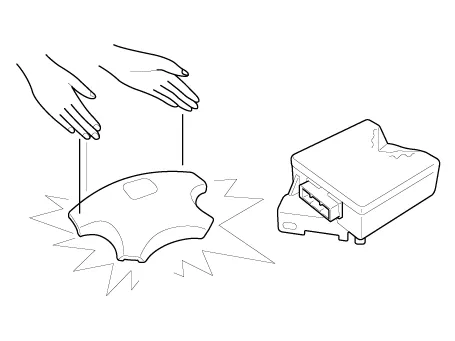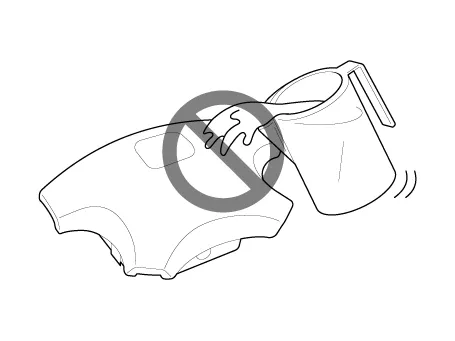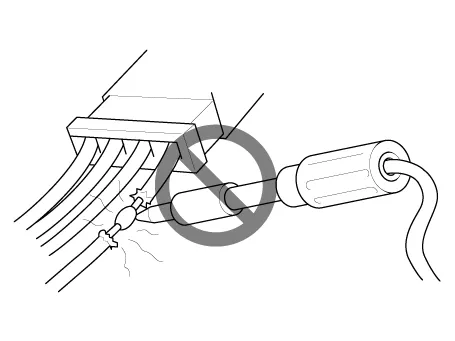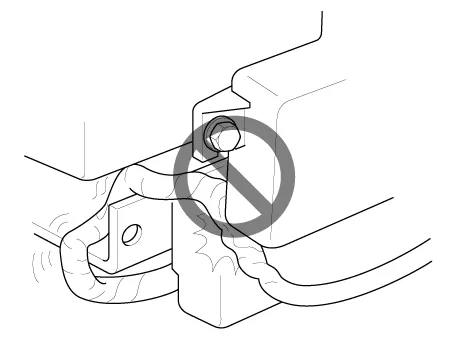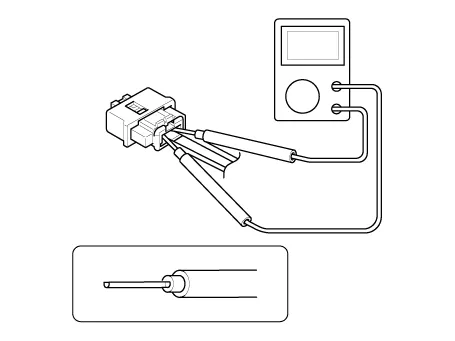Hyundai Ioniq (AE): Restraint / General safety information and caution
| Precautions |
| • | Except when performing electrical inspections, always turn the ignition switch OFF and disconnect the negative cable from the battery, and wait at least three minutes before beginning work. |
The contents in the memory are not erased even if the ignition switch is turned OFF or the battery cables are disconnected from the battery. |
| • | Use the replacement parts which are manufactured to the same standards as the original parts and quality. Do not install used SRS parts from another vehicle. Use only new parts when making SRS repairs. |
| • | Carefully inspect any SRS part before you install it. Do not install any part that shows signs of being dropped or improperly handled, such as dents, cracks or deformation.
|
| • | Before removing any of the SRSCM parts (including the disconnection of the connectors), always disconnect the SRSCM connector. |
| • | Store the removed airbag with the pad surface up. |
| • | Keep free from any oil, grease, detergent, or water to prevent damage to the airbag assembly.
|
| • | Store the removed airbag on secure, flat surface away from any high heat source (exceeding 85 C/185 F). |
| • | Never perform electrical inspections to the airbags, such as measuring resistance. |
| • | Do not position yourself in front of the airbag assembly during removal, inspection, or replacement. |
| • | Refer to the scrapping procedures for disposal of the damaged airbag. |
| • | Be careful not to bump or impact the SRS unit or the side impact sensors or front impact sensors whenever the ignition switch is ON, wait at least three minutes after the ignition switch is turned OFF before begin work. |
| • | During installation or replacement, be careful not to bump (by impact wrench, hammer, etc.) the area around the SRS unit and the side impact sensor and the front impact sensors. The airbags could accidentally deploy and cause damage or injury. |
| • | Replace the front airbag module, SRSCM, FIS when the front airbag is deployed. Replace the airbag wiring when the airbag wiring get damaged. Replace the side airbag module, the curtain airbag module, SRSCM, SIS when deploying the side airbag. Replace the airbag when the airbag wiring get damaged. |
| • | After a collision in which the airbags or the side air bags did not deploy, inspect for any damage or any deformation on the SRS unit and the side impact sensors. If there is any damage, replace the SRS unit, the front impact sensor and/or the side impact sensors. |
| • | Do not disassemble the SRS unit, the front impact sensor or the side impact sensors. |
| • | Turn the ignition switch OFF, disconnect the battery negative cable and wait at least three minutes before beginning installation or replacement of the SRS unit. |
| • | Be sure the SRS unit, the front impact sensor and side impact sensors are installed securely with the mounting bolts. |
| • | Do not spill water or oil on the SRS unit, or the front impact sensor or the side impact sensors and keep them away from dust. |
| • | Store the SRS unit, the front impact sensor and the side impact sensors in a cool (15 - 25°C/ 59 - 77°F) and dry (30 - 80% relative humidity, no moisture) area. |
| • | Never attempt to modify, splice, or repair SRS wiring. If there is an open or damage in SRS wiring, replace the harness.
|
| • | Be sure to install the harness wires so that they are not pinched, or interfere with other parts.
|
| • | Make sure all SRS ground locations are clean, and grounds are securely fastened for optimum metal-to-metal contact. Poor grounding can cause intermittent problems that are difficult to diagnose. |
| • | When using electrical test equipment, insert the probe of the tester into the wire side of the connector. Do not insert the probe of the tester into the terminal side of the connector, and do not tamper with the connector.
|
| • | Use a u-shaped probe. Do not insert the probe forcibly. |
| • | Use specified service connectors for troubleshooting. Using improper tools could cause an error in inspection due to poor metal contact. |
| Disconnecting |
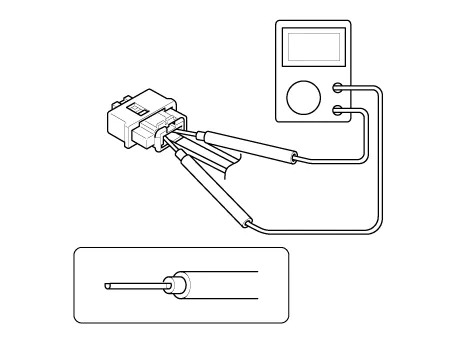
| Connecting |
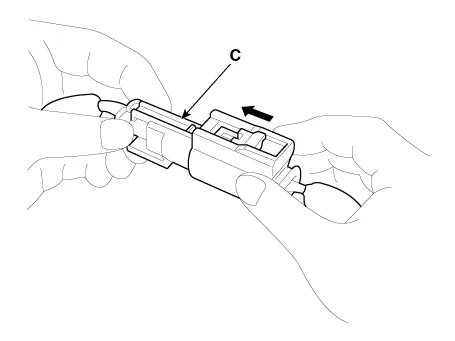
Special Service Tools Tool (Number and Name) Illustration Use Deployment tool0957A-34100AAirbag deployment tool.
Warning Lamp ActivationWarning Lamp Behavior after Ignition OnAs soon as the operating voltage is applied to the SRSCM ignition input, the SRSCM activates the warning lamp for a LED lamp check.
Other information:
Hyundai Ioniq (AE) 2017-2022 Service & Repair Manual: Photo Sensor. Repair procedures
Inspection1.Turn the ignition switch ON.2.Connect the GDS.3.Emit intensive light toward the photo sensor using a lamp, and check the output voltage change.4.The voltage will rise with higher intensive light and reduce with lower intensive light.1. Auto light signal2.
Hyundai Ioniq (AE) 2017-2022 Service & Repair Manual: General safety information and caution
Safety PrecautionPrecautions To Take Before Servicing High Voltage System • Since hybrid vehicles contain a high voltage battery, if the high voltage system or vehicles are handled incorrectly, this might lead to a serious accidents like electric shock and electric leakage.
Categories
- Manuals Home
- Hyundai Ioniq Owners Manual
- Hyundai Ioniq Service Manual
- Jump starting procedure
- Child-Protector Rear Door Locks
- Engine Mechanical System
- New on site
- Most important about car


